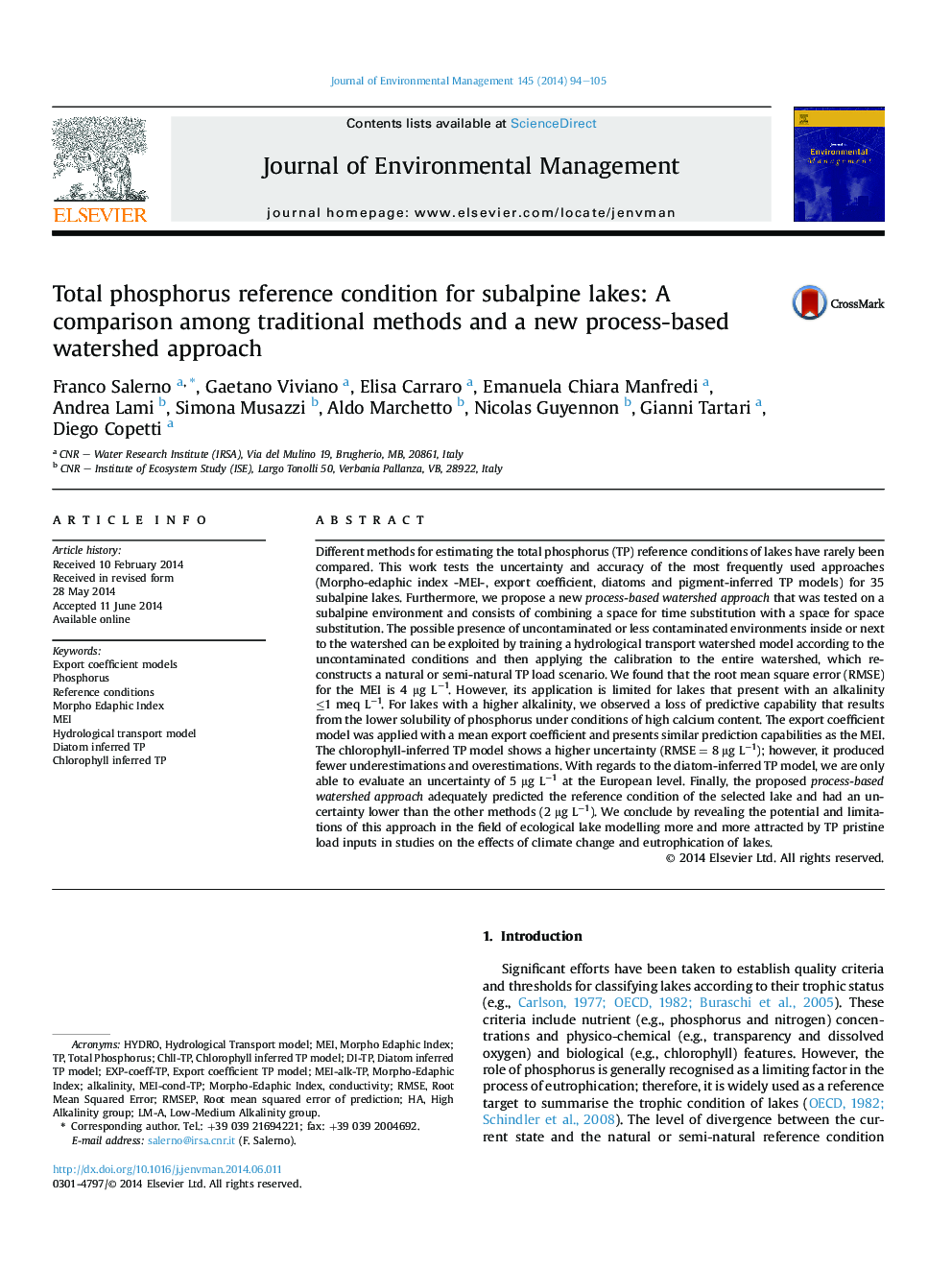| Article ID | Journal | Published Year | Pages | File Type |
|---|---|---|---|---|
| 7483455 | Journal of Environmental Management | 2014 | 12 Pages |
Abstract
Different methods for estimating the total phosphorus (TP) reference conditions of lakes have rarely been compared. This work tests the uncertainty and accuracy of the most frequently used approaches (Morpho-edaphic index -MEI-, export coefficient, diatoms and pigment-inferred TP models) for 35 subalpine lakes. Furthermore, we propose a new process-based watershed approach that was tested on a subalpine environment and consists of combining a space for time substitution with a space for space substitution. The possible presence of uncontaminated or less contaminated environments inside or next to the watershed can be exploited by training a hydrological transport watershed model according to the uncontaminated conditions and then applying the calibration to the entire watershed, which reconstructs a natural or semi-natural TP load scenario. We found that the root mean square error (RMSE) for the MEI is 4 μg Lâ1. However, its application is limited for lakes that present with an alkalinity â¤1 meq Lâ1. For lakes with a higher alkalinity, we observed a loss of predictive capability that results from the lower solubility of phosphorus under conditions of high calcium content. The export coefficient model was applied with a mean export coefficient and presents similar prediction capabilities as the MEI. The chlorophyll-inferred TP model shows a higher uncertainty (RMSE = 8 μg Lâ1); however, it produced fewer underestimations and overestimations. With regards to the diatom-inferred TP model, we are only able to evaluate an uncertainty of 5 μg Lâ1 at the European level. Finally, the proposed process-based watershed approach adequately predicted the reference condition of the selected lake and had an uncertainty lower than the other methods (2 μg Lâ1). We conclude by revealing the potential and limitations of this approach in the field of ecological lake modelling more and more attracted by TP pristine load inputs in studies on the effects of climate change and eutrophication of lakes.
Keywords
Related Topics
Physical Sciences and Engineering
Energy
Renewable Energy, Sustainability and the Environment
Authors
Franco Salerno, Gaetano Viviano, Elisa Carraro, Emanuela Chiara Manfredi, Andrea Lami, Simona Musazzi, Aldo Marchetto, Nicolas Guyennon, Gianni Tartari, Diego Copetti,
